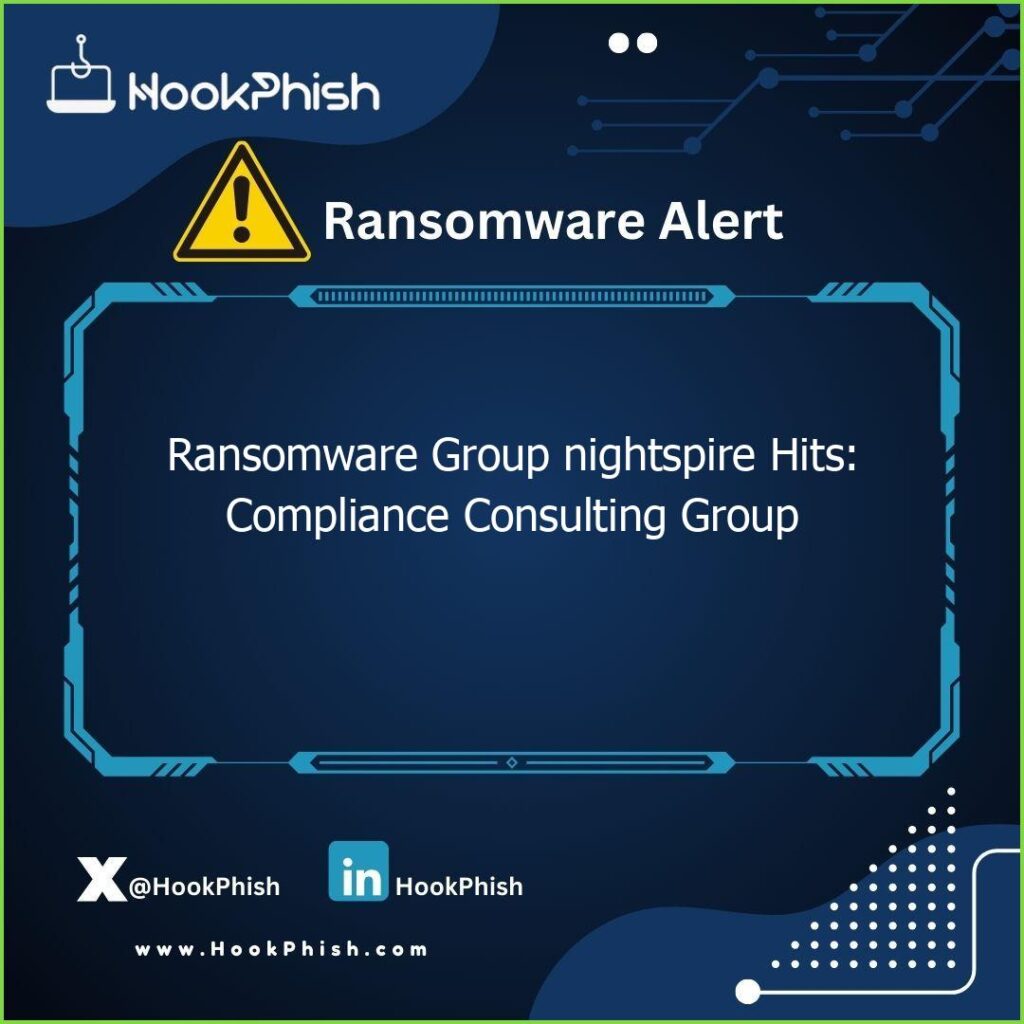A data breach is a security incident in which sensitive, confidential or protected information is accessed without authorization by an unauthorized person. A data breach can occur through hacking, theft, human error, or negligence.
Types of data breach
In the following lines we explain the types of data that may be hacked:
- Personal information: such as names, addresses, Social Security numbers, and dates of birth.
- Financial information: such as credit card numbers and bank account information.
- Medical information: such as medical records and health information.
- Business data: such as trade secrets and intellectual property.
What are the consequences of a data breach?
- Identity theft: Stolen personal information can be used to open new accounts or make fraudulent transactions in the victim’s name.
- Financial fraud: Stolen financial information can be used to withdraw money from the victim’s accounts or make unauthorized purchases.
- Invasion of privacy: Stolen information can be used to harass, intimidate, or embarrass the victim.
- Damage to company reputation: A data breach can lead to damage to a company’s reputation and loss of customers.
How to protect yourself from a data breach?
- Use strong, unique passwords for each account.
- Be careful about the personal information you share online.
- Install antivirus and anti-malware software on your computer.
- Keep your computer software and drivers up to date.
- Be careful about the links you click and the attachments you open in emails.
- Monitor your credit reports regularly.
What to do if you think your data has been hacked?
- Notify the company or organization that has been hacked immediately this is called Simulated Phishing.
- Change your passwords for all accounts.
- Monitor your credit reports closely.
- Consider setting an identity theft alert.
What are data breaches and how to prevent them?
A data breach is an event in which sensitive information is accessed or stolen without authorization. This information can include personal data such as Social Security numbers, credit card information, or medical records, or business information such as trade secrets or intellectual property.
Data breaches can have serious consequences for individuals and organizations alike. For individuals, it may lead to identity theft and financial fraud. For organizations, it may lead to reputational damage, loss of customers and legal fines.
How to prevent data breaches?
There are many things individuals and organizations can do to prevent data breaches, including:
- Use strong, unique passwords: You should not use the same password for more than one account, and passwords should be strong, long, and include a mix of letters, numbers, and symbols.
- Install and update antivirus and anti-malware software: These programs can help protect your computer from malware.
- Be careful about what you click and open: Don’t click on links or attachments in suspicious emails, and don’t open files from untrusted sources.
- Keep your software up to date: Software updates often include security patches that fix vulnerabilities that hackers can exploit.
- Be aware of phishing attacks: Never provide personal information on a website unless you are sure it is secure.
- Use encryption: Data can be encrypted to protect it from unauthorized access.
- Make regular backups of your data: If a data breach occurs, you can restore your data from a backup.
Additional practices for organizations to prevent data breaches
In addition to the above steps, organizations can also take the following steps to prevent data breaches:
- Cybersecurity training for employees: Employees should be trained on how to recognize cybersecurity threats and how to avoid them, this is called Cybersecurity Awareness.
- Establish a strong security policy: The organization should have a security policy that defines how data will be protected.
- Protect sensitive data: Sensitive data should be stored in a secure location and access to it restricted.
- Test computer systems and networks regularly: Computer systems and networks should be tested regularly for security vulnerabilities.
- Develop a data breach response plan: An organization should have a response plan in the event of a data breach.
What are the possible consequences of a data breach?
The consequences of a data breach can be severe for individuals and organizations alike. Here are some possible consequences:
Consequences of a data breach on individuals
- Identity theft: Stolen personal information, such as Social Security numbers, dates of birth, and financial account information, can be used for identity theft. Scammers can use this information to open new accounts in the victim’s name, rack up debt, or even get medical care.
- Financial Distress: Identity theft can result in significant financial losses for the victim, including fraud fees and reputation restoration costs. Damage to a victim’s credit report can be difficult to correct, and may take months or even years.
- Harassment and annoyance: Stolen personal information can be used to harass the victim. The victim may receive threatening emails, phone calls, or mailings, or may be tracked online.
Consequences of a data breach on organizations
- Financial Damage: Data breaches can cost companies significant amounts of money in the form of legal fines, customer damages, and computer system repair costs. This may also lead to loss of customers and decline in the company’s reputation.
- Reputational damage: Data breaches can cause significant damage to a company’s reputation. Customers may view the company as unsafe and unreliable, which may result in loss of business.
- Business Interruption: Data breaches can result in significant business interruption. Businesses may have to shut down their computer systems while the breach is investigated and fixed, which could result in lost productivity and revenue.
- Legal Requirements: Businesses that experience data breaches may be subject to laws and regulations that require them to notify customers of the breach and take steps to protect their data. This can be expensive and time-consuming.
In addition to these consequences, data breaches can also have a negative impact on employee morale. Employees may feel concerned about the safety of their personal information and may be less productive.
It is important for businesses and individuals to take steps to prevent data breaches. This can be done by implementing strong security safeguards, educating employees about cybersecurity risks, and following security best practices.
What are the disadvantages of a data breach?
The consequences of a data breach can be severe for individuals and businesses alike. Some of the more common potential consequences include:
Financial theft:
Hackers can use stolen financial information, such as credit card numbers or bank account numbers, to steal money or make fraudulent purchases.
Identity theft:
Hackers can use stolen personal information, such as name, date of birth, and national ID, to impersonate the victim, open new accounts in her name, obtain loans, or commit other crimes.
Damage to reputation:
Data breaches can damage a company or organization’s reputation, potentially resulting in the loss of customers and partners.
legal responsibility:
In some cases, companies or organizations may face legal liability for data breaches if they do not take adequate steps to protect their data.
Work interruption:
Data breaches can disrupt a company or organization’s operation, potentially resulting in significant financial losses.
Emotional distress:
Data breaches can cause significant emotional distress to victims, who may feel anxious, angry and insecure.
In addition to these potential consequences, a data breach may also have long-term consequences for individuals and businesses. For example, it may be difficult for victims to correct errors in their credit reports, and businesses may have difficulty attracting and retaining customers after a data breach.
What to do if your personal privacy is breached?
Having your personal privacy breached is an unsettling and upsetting experience. But do not panic, you can take some steps to protect yourself and limit the damage. Here’s what you should do:
First: Make sure that an actual breach occurred
Sometimes, you may receive notifications that your data has been breached when it has not actually happened. Verify the authenticity of the notification by verifying its source and reviewing the website of the organization claiming to have been hacked.
Second: Determine the type of information that was hacked
Actions to be taken vary depending on the type of information that has been compromised. For example, if your credit card information is compromised, you will need to take steps to protect yourself from identity theft. If your passwords have been hacked, you will need to change them immediately.
Third: Take steps to protect yourself
Depending on the type of information that was compromised, here are some steps you can take to protect yourself:
- Change your passwords: Change the passwords for your online accounts, including email, banking, and social media accounts. Make sure to use strong, unique passwords for each account.
- Enable two-factor authentication: Two-factor authentication adds an extra layer of security to your accounts by requiring a code, fingerprint, or other method to verify your identity in addition to your password.
- Monitor your credit reports: Monitor your credit reports for malicious activity. You can get a free copy of your credit report from each of the three major credit rating agencies in the United States, through Data Breach Monitor.
- Report the incident: Report the data breach to the appropriate authorities. In the United States, you can report this to the Federal Trade Commission (FTC).
- Ask for help: If you need help dealing with your data breach, there are many resources available to you, including nonprofit organizations and law firms.
Fourth: Take steps to prevent future breaches
To help prevent future breaches, you can take the following steps:
- Be careful about the information you share online: Only share sensitive personal information, such as your Social Security number or credit card information, with trusted websites, this is called Typosquatting Detection.
- Use strong security software: Use antivirus and anti-malware software on your computer. Make sure to update it regularly.
- Be aware of online scams: Be aware of common online scams, such as fraudulent emails and phishing.
- Keep your software up to date: Make sure your operating system, software, and applications are updated regularly. These updates often include security patches to protect known security vulnerabilities.
Ways to confront a data breach
Data breach is a serious problem that threatens both individuals and companies alike. Fortunately, there are many steps you can take to reduce the risk of becoming a victim of a data breach and protect your information. Here are some important tips:
Good security practices:
- Use strong, unique passwords for each of your accounts. Avoid using the same password for multiple accounts, and use a mix of upper and lower case letters, numbers, and symbols to make passwords more difficult to guess.
- Enable two-factor or multi-factor authentication (2FA/MFA). 2FA adds an extra layer of security to your accounts by requiring a code, fingerprint, or other method to verify your identity in addition to your password.
- Be careful about the links you click and the attachments you open in emails. These links and attachments may contain malware that can harm your device and steal your information.
- Keep your software and applications up to date. Updates often include security patches that help protect your device from known vulnerabilities.
- Use antivirus and anti-malware software. These programs can help you detect and remove malware from your device.
- Be careful about the information you share online. Never share sensitive information like your Social Security number or credit card information except with trusted websites.
Safety practices for individuals:
- Be careful about public Wi-Fi networks. Avoid using unsecured public Wi-Fi networks to access sensitive information, such as online banking. If you have to use public Wi-Fi, consider using a VPN (virtual private network) to protect your data.
- Keep your devices safe. Make sure you use a strong password to secure your phone or tablet, and activate security features like screen lock and encryption.
- Securely dispose of paper documents containing sensitive information. Don’t simply throw documents containing sensitive information such as account statements or invoices into the trash. Tear or shred them before throwing them away.
Corporate security practices:
- Establish and enforce a strong security policy. This policy should specify password requirements, use of laptops, use of data, and other important security practices.
- Train your employees on good security practices. Your employees should be aware of security threats and how to protect themselves and themselves from data breaches.
- Protect your systems from malware and cyberattacks. Use a firewall, antivirus, and other anti-malware software to protect your systems from known threats.
- Make regular backups of your data. In the event of a data breach, you will be able to restore your data from backups.
- Create a data breach response plan. This plan should outline the steps you will take if a data breach occurs, such as notifying customers and others affected.
By taking these steps, you can help protect yourself and your company from a data breach. Remember, it’s important to be aware of security threats and take proactive steps to protect your information.



